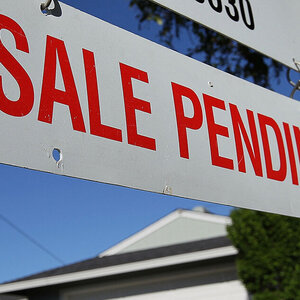Commercial Real Estate News

Commercial Net Lease Investment Activity Returns to Pre-Pandemic Levels in U.S.
Commercial News » New York City Edition | By Michael Gerrity | June 3, 2021 8:51 AM ET
According to new research from CBRE, investment in U.S. net-lease properties was close to pre-pandemic levels in Q1 2021, driven by robust institutional acquisition activity, increased interest in office assets as return-to-the-workplace plans gained momentum and, despite COVID-19 related international travel restrictions, resilient foreign investment.
Net-lease properties are characterized by a lease structure in which the tenant agrees to pay a portion or all of the taxes, insurance fees and maintenance costs in addition to rent. While net-lease investment activity (comprising office, industrial and retail properties) decreased by 2.6% year-over-year in Q1 2021 to $14.3 billion, volume was up by 10% from pre-pandemic Q1 2019. The decline for total U.S. commercial real estate volume in Q1 2021 was deeper at 18.3% year-over-year.
"Much like the Global Financial Crisis (GFC) trend we experienced over a decade ago, net-lease properties continue to attract interest during this downturn as investors seek long-term dependable cash flows. Interest in the office sector is on the rise, with strong demand for mission-critical assets as COVID-19 guidance changes and employees begin to return to the workplace," said Will Pike, vice chairman of Net Lease Properties for Capital Markets at CBRE.
The office sector's share of total net-lease investment volume increased by 5.2 percentage points from the year-earlier Q1 to 41.5%, with its largest first quarter volume on record at nearly $6 billion. The industrial sector continued to attract the most net-lease capital with its share remaining relatively unchanged at 43.4%, while the retail sector's share fell by 5.4 percentage points to 15.1%.
Institutional and equity funds, the largest net-lease buyers this quarter, increased their acquisition activity by 40% year-over-year in Q1 2021 to $6.7 billion. Private investment in net-lease properties grew by 6.7% over the same period to $6.3 billion. REIT net-lease investment volume was down by 44% year-over-year in Q1 2021 to $1.4 billion.
Large gateway markets continue to garner the most U.S. net-lease investment activity, with Boston being the top target in Q1 2021. Net-lease investors are also increasingly attracted to high-growth secondary and tertiary markets, with some of the largest four-quarter percentage gains occuring in Provo, Utah (+639.4%); Trenton, New Jersey (+609.8%); Savannah, Georgia (+451.5%); and Honolulu, Hawaii (+258.7%).
While the COVID-19 downturn and travel restrictions have restricted international investors in acquiring U.S. net-lease assets, Q1 2021 foreign investment volume still increased by 8.7% year-over-year to $1.7 billion. International buyers accounted for 11.6% of total net-lease volume in Q1 2021, above the five-year Q1 average of 11.1%. San Francisco, Richmond, Boston, Los Angeles and New York City had the most net-lease international investment in Q1 2021. Singapore, South Korea, Canada and Kuwait comprised 75% of all offshore capital targeting U.S. net-lease properties for the year ending Q1 2021.
The net-lease sector is attractive to investors because the long-term leases and creditworthy tenants are considered safe attributes during an economic downturn. During the COVID-19 pandemic, the net-lease share of total commercial real estate volume increased to 14.7% in 2020 from 13.5% for full year 2019. The sector exhibited a similar trend during the GFC when its share increased to 15.1% for full year 2009 from 8.7% for full year 2007. For the year ending in Q1 2021, while total net-lease investment volume declined by 25.9% compared with the same period last year as the COVID-19 economic downturn stalled transaction activity, it comprised 15.4% of total commercial real estate investment volume.
Sign Up Free | The WPJ Weekly Newsletter
Relevant real estate news.
Actionable market intelligence.
Right to your inbox every week.
Real Estate Listings Showcase
Related News Stories
Commercial Real Estate Headlines
- U.S. Commercial Mortgage Delinquencies Rise in Q2, CMBS Loans Lead the Surge
- Tokenization-Focused Real Estate Investment Bank Announced
- Commercial Cap Rates Edge Lower in U.S., Hinting at Market Turn
- WPV Targets New $6 Trillion Digital Real Estate Tokenization Opportunity
- $1 Trillion in Data Center Development Underway Through 2030
- WORLD PROPERTY VENTURES: The 'Anti-VC' of Real Estate Plans Major Capital Raise
- Multifamily Sector Enjoys Record Absorption in U.S. as Supply Slows, Vacancies Drop
- Employee Back-to-Office Attendance Surges in U.S.
- Phnom Penh Commercial Property Sectors Face Crosswinds in 2025
- World Property Bank Announced to Capitalize on Coming Trillion-Dollar Tokenization Boom
- REAL ESTATE PREDICTIONS: Decentralized Events Contract Exchange in Development
- U.S. Architecture Billings Improve Slightly in May
- Tokyo Office Demand Spills into Non-Core Wards in 2025
- AI Hyperscalers Drive Record Data Center Leasing in Early 2025
- Commercial, Multifamily Mortgage Debt in U.S. Hits Record $4.81 Trillion in Early 2025
- U.S. Multifamily Market Rebounds in Early 2025
- U.S. Office Market Experiences Historic Conversion Shift
- New York City Enters New Era of Office-to-Residential Conversions
- World Property Ventures Plans New Capital Raise
- U.S. Commercial Real Estate Lending Rebounds Sharply in Early 2025
- U.S. Multifamily Housing Confidence Declines in Early 2025
- Asia Pacific Commercial Investment Holds Steady in Early 2025
- Carnival Plans New Miami Headquarters Spanning Over 600,000 Square Feet
- Hong Kong Property Investors Take a Wait-and-See Approach Due to U.S. Tariffs
- U.S. Multifamily Buyer and Seller Sentiment Improves in Early 2025
- One Trillion Dollars of America's Commercial Property Loans Mature in 2025
- U.S. West Coast Dominates Self Storage Demand
- Phoenix, Orange County and Inland Empire Emerge as Leading U.S. Industrial Markets
- U.S. Mega Distribution Centers Leasing Activity Grew in 2024
- U.S. Commercial Borrowing to Increase to $583 Billion in 2025, Up 16 Percent Annually
- Demand for U.S. Life Sciences Space Spikes 28 Percent Annually in Late 2024
- Multifamily Property Sector in America Rebounding
- Asia Pacific Commercial Property Investment Spikes 23 Percent in 2024
- U.S. Commercial Property Market Primed for Growth in 2025
- Architecture Industry Sees Mixed Signals as 2025 Approaches
- Global Data Center Demand Spikes in 2025
- 2025 Prediction: U.S. Commercial Investment Recovery Expected to Gain Traction
- Holiday Retail Sales for 2024 to Hit Record $1 Trillion
- Tech, AI Industries Drive Largest Share of Office Leasing Activity in U.S.
- Commercial Real Estate Lending in U.S. Enjoys Strong Growth in Q3







